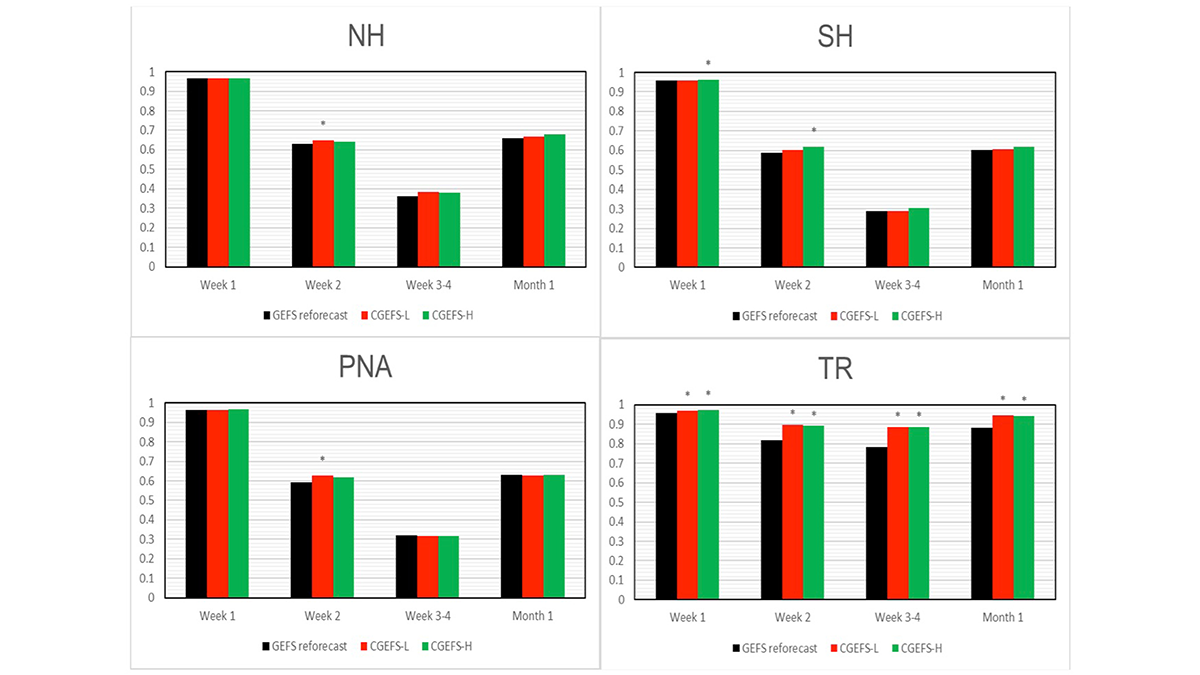Editors’ Highlights are summaries of recent papers by AGU’s journal editors.
Source: Journal of Geophysical Research: Atmospheres
Improving the skills of weather forecasts with longer lead time is a perpetual challenge to the scientific and operational weather forecast community. In a new study, Zhu et al. [2023] describe one milestone of the forecasting system at the National Centers for Environmental Prediction (NCEP) with lead time of one to two four weeks.
Built on top of the current operational Global Ensemble Forecast System version 12 (GEFSv12), a new system is developed by fully coupling the atmosphere, land, ocean, ice and waves. Forecasting skills are assessed by using anomalies of 500 hectopascals geopotential height, atmospheric zonal winds at different heights, tracks and intensity of tropical cyclones, and the Madden-Julian Oscillation (MJO) among others. The new system is shown to have better forecast skills at different lead times than the uncoupled system.
Citation: Zhu, Y., Fu, B., Yang, B., Guan, H., Sinsky, E., Li, W., et al. (2023). Quantify the coupled GEFS forecast uncertainty for the weather and subseasonal prediction. Journal of Geophysical Research: Atmospheres, 128, e2022JD037757. https://doi.org/10.1029/2022JD037757
—Minghua Zhang, outgoing Editor in Chief, JGR: Atmospheres

